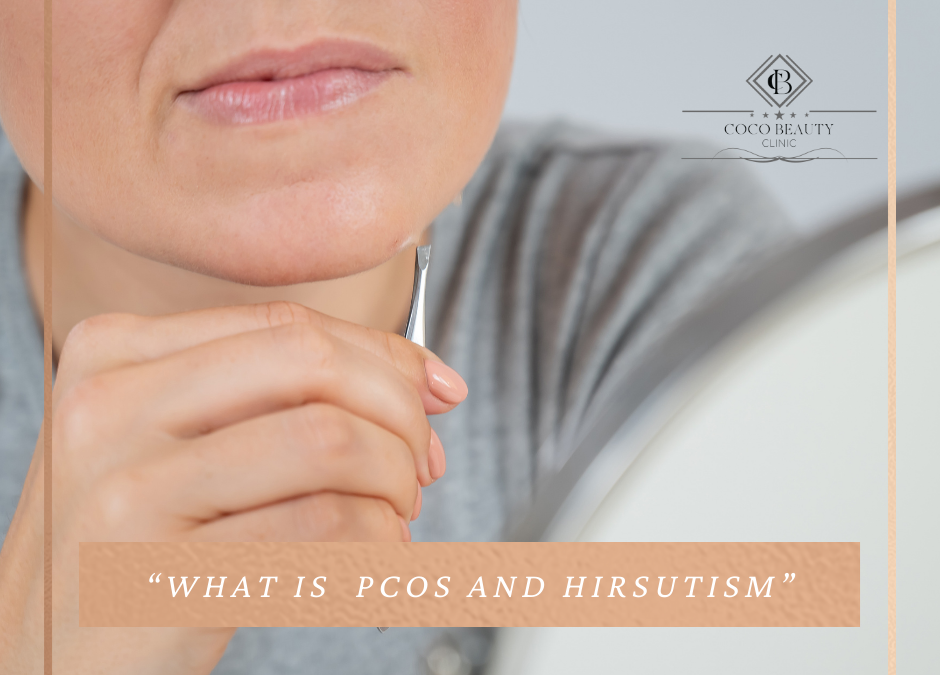“I look like a man”
“I hate my hair”
“I feel embarrassed about my face/hair”
“I don’t want to show my face to people”
“I’m glad we have to wear masks so I can cover my face”
These are only few comments I hear daily from my clients who suffer from hirsutism. It is awful for women to feel that way.
Hirsutism is the excessive growth of facial or body hair on women. Hirsutism can be seen as coarse, dark hair that may appear on the face, chest, abdomen, back, upper arms, or upper legs.
Hirsutism is a symptom of medical disorders associated with the hormones called androgens.
Polycystic ovary syndrome (PCOS) is a common hormone disorder that can cause a range of symptoms, including hirsutism, which is excess facial and body hair. Polycystic ovary syndrome (PCOS), in which the ovaries produce excessive amounts of androgens, is the most common cause of hirsutism and may affect up to 10% of women. Hirsutism is very common and often improves with medical management
The female body produces male hormones, also called androgens. This includes testosterone. Androgens play a role in triggering puberty and stimulating hair growth in the underarms and pubic areas. They have other important functions as well.
PCOS causes extra androgen production, resulting in virilization. This refers to the development of more masculine features, including excess hair in places where it doesn’t usually grow, such as the:
face
neck
chest
abdomen
These extra androgens can also cause the hair on your head to start thinning, especially near the front of your scalp. This is known as androgenic alopecia or female pattern hair loss but I will talk about it in my next live.
Hirsutism may be caused by:
Cushing syndrome. This occurs when your body is exposed to high levels of the hormone cortisol. It can develop from your adrenal glands making too much cortisol or from taking medications such as prednisone over a long period.
Medications. Some medications can cause hirsutism. These include minoxidil (Minoxidil, Rogaine); danazol, which is used to treat women with endometriosis; testosterone (Androgel, Testim); and dehydroepiandrosterone (DHEA). If your partner uses topical products containing androgens, you can be affected as well, through skin-to-skin contact.
Hirsutism can be treated by addressing the root cause of the condition in this case PCOS.
Medications, on their own, may not make the hair go away completely, but will stop it from getting worse. Mechanical hair removal methods like waxing, IPL, and electrolysis will further enhance the effects of hormone therapy.
Electrolysis is a common hair removal technique that uses electrical pulses to target the root of the hair in order to permanently destroy each hair follicle and prevent regrowth. This method works best when treating small areas, like lip, chin, sides of the face.
Electrolysis is the only permanent hair removal method approved by the FDA
IPL hair removal is a generally safe and effective technique for women who desire a long-term reduction of hair growth. It works by focusing rays of light to induce selective damage to hair follicles. This technique produces a gradual but permanent reduction of hair regrowth and can be used in larger areas of the body.
It works best on light skin and black coarse hair.
Although in clients with PCOS it might require 8-12 sessions plus maintenance treatment every 6-12 months to provide satisfactory hair removal.
Specialized hair removal techniques have high success rates but they must be combined with treatment of excess androgens. Both electrolysis and IPL hair removal work for women with PCOS, but it’s important to manage your expectations. While some patients reported a growth delay of 2-6 months after just one treatment, most will need multiple sessions to achieve permanent hair reduction.
Note that hair can still grow even when many old hair follicles have been destroyed. Because hair grows in three different stages and your hair is not all in the same stage at the same time, destroying all follicles in a few sessions is unlikely. But when used in combination with other treatment options and tailored to the person, many will achieve satisfactory results.
Regards,
A.
